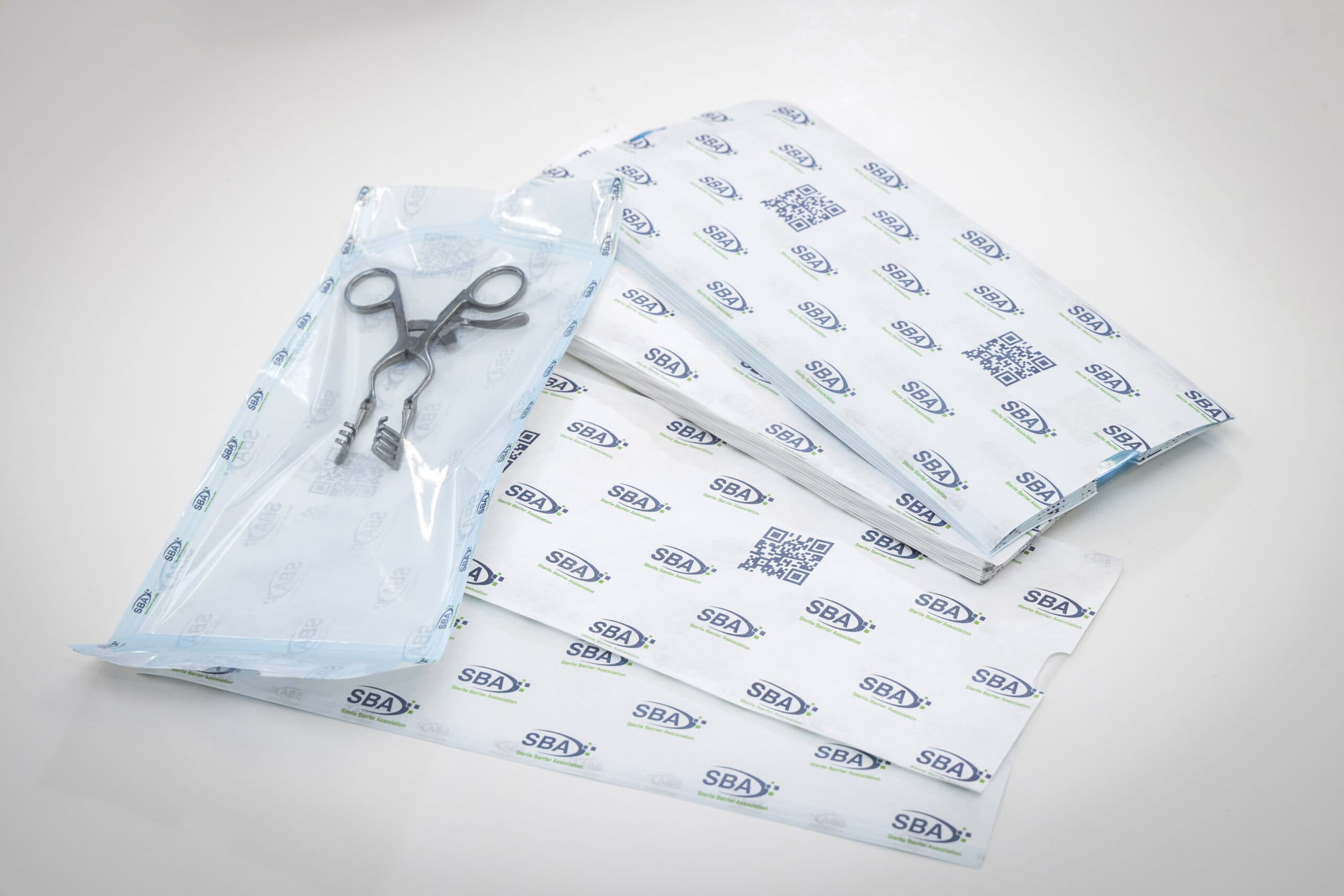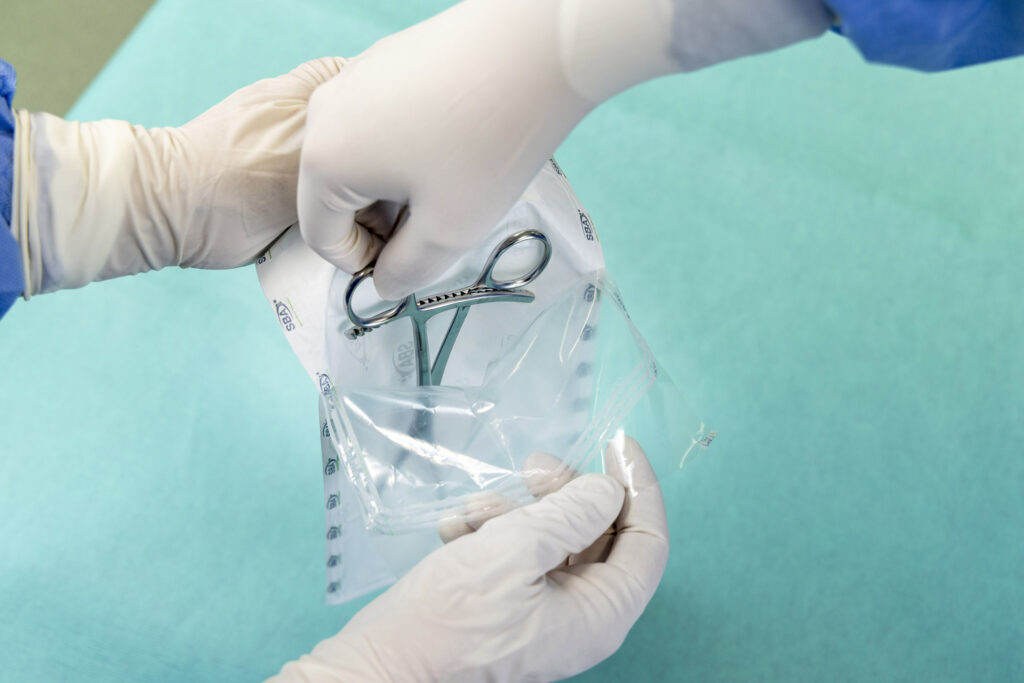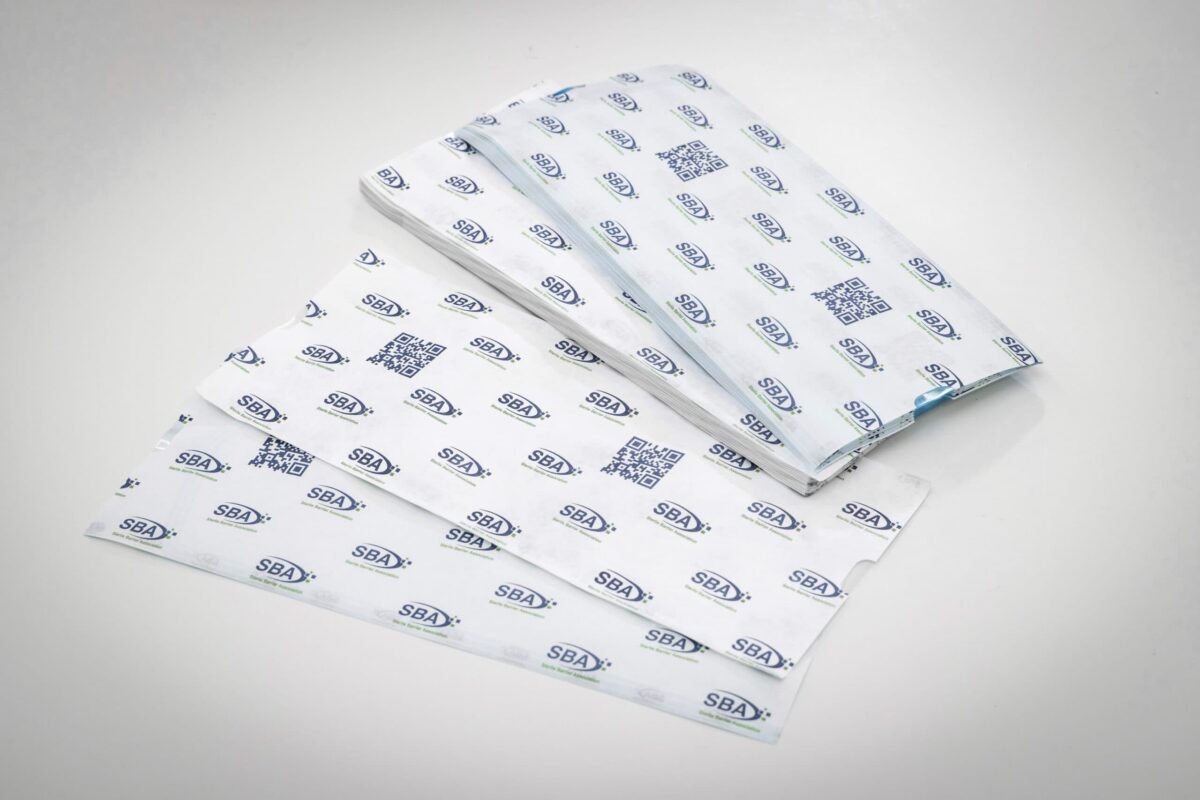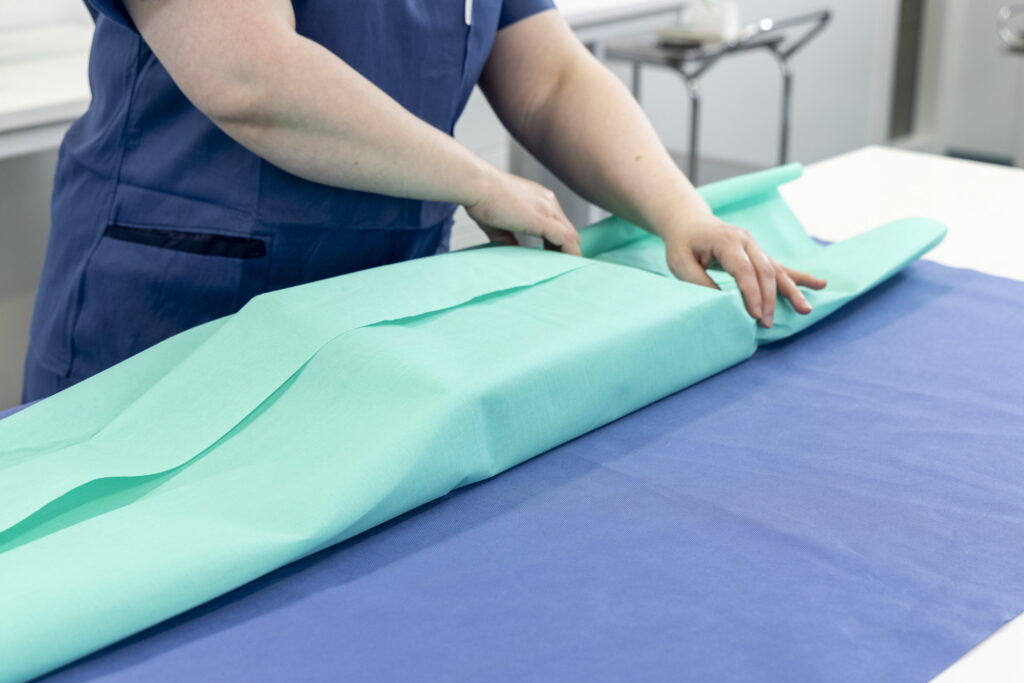




Typical material types used for sterile barrier systems are
Plastic films are made from a range of polymers which are selected for the properties they provide, such as mechanical performance, temperature resistance, gas and moisture barrier, optics etc. Different polymers offer a differing balance of properties and can be used individually as mono-layer films, or in combination in multi-layer films. Typically multi-layer films are used where a single polymer does not provide the properties required in an efficient manner and they are currently very common in medical packaging.

PE Polyethylene is available in a range of different densities. Low Density PE (LDPE) Linear Low Density PE (LLDPE) is soft, stretchable, and has good heat sealing properties. It lacks temperature and abrasion resistance. Medium and High Density PE’s (MDPE and HDPE) are stiffer than low density grades but are less tough and seal less well. All types have good water vapour barrier, with the highest density grades being the best.
PP Polypropylene is stronger and stiffer than PE with somewhat higher temperature resistance allowing it to be used as a seal layer for steam sterilization applications. Most grades are not suitable for irradiation as it becomes brittle. In oriented form (OPP) it has enhanced stiffness, tensile strength and clarity and a higher water vapour barrier than PE.
I Ionomer is a thermoplastic ethylene based copolymer, using comonomers with ionic bonding and metal ions to enhance its performance. It has high impact and puncture resistance, excellent thermoforming and optical performance but as abrasion resistance is only moderate thicker films sometimes need to be used.
PA Polyamide has high mechanical strength, tear and temperature resistance making films very resistant to damage that could compromise pack sterility. It has some gas barrier properties but is not sealable so is often combined with other polymers to provide a sealing layer (e.g. PA/PE). Like polypropylene and PET is it also available in oriented form with enhanced stiffness, tensile strength, clarity and barrier properties.
PET Polyethylene terephthalate (polyester) can be used as an oriented film (OPET) which has excellent stiffness, strength, clarity and temperature resistance, or in amorphous form (APET) where it offers good thermoforming performance and is still reasonably stiff. OPET is often used in outer layer of non-forming films used for example in manufacturing sterilization pouches (OPET/PE or OPET/PP).
EVOH Ethylene vinyl alcohol is used almost exclusively as a gas barrier layer in multilayer structures (E.g. PP/EVOH/PP). The gas barrier properties are excellent under most conditions with the exception of very high humidity.
EVA Ethylene vinyl acetate is copolymer of ethylene and vinyl acetate (VA). It is used e.g. in sealants. It is tough, and flexible and had good clarity and gloss, e.g. EVA/Surlyn/EVA.
Films are manufactured either by co-extrusion (different grades of granulates are melted and multilayer film is produced in one step) or by lamination (two or more readymade films are glued together).
Thermoforming films are normally divided to flexibles (thickness 50-200 microns) and semirigid/rigid films (from 250 microns up to 700 microns).
Paper used in the production of sterile barrier systems is carefully manufactured to provide an effective microbial barrier which allows sterilisation gases and vapours into the pack but subsequently prevents the ingress of bacteria during transit , storage and handling. In addition, surface impregnation or coating can give larger processing windows and improved peel characteristics and reinforcement with synthetic fibres can be used to enhance tear, burst and peel resistance.
Paper used in the medical device industry and in healthcare institutions falls into the following categories

“A nonwoven is a sheet of fibres, continuous filaments, or chopped yarns of any nature or origin, that have been formed into a web by any means, and bonded together by any means, with the exception of weaving or knitting.”

The definition is general in nature, nonwovens used for medical packaging applications need to comply with the requirements for materials of EN ISO 11607 part 1 (See also key properties to be evaluated under Material Types). Microbial barrier characteristics and physical strength properties can be tailored to provide a high degree of protection for various medical device applications.
Nonwovens can be used alone to create a sterile barrier system typically by using different wrapping methods to enclose the device to be packaged in a way that creates a tortuous path and allows aseptic opening.
Nonwovens are also used alone or in combination with other materials like films to create pouches, header bags and sterilisation bags or may be used as rigid or semi-rigid tray lids. Nonwovens may be coated or non-coated depending on the sealing technology and the combination of sheet materials used.
Key properties to be evaluated for all materials are the impermeability for films or the microbial barrier if the material is porous, the biocompatibility, the toxicological attributes, the physical and chemical properties, the compatibility with respective forming, sealing and sterilisation processes as well as stability before and after sterilisation.
Individual requirements determine the selection of the materials, such as coated and uncoated papers, non-woven products, or laminates and films. Pressure sensitive coatings allow high speed machine processing. A wide range of heat seal coatings are available from SBA members.
Click here to view the SBA’s Sterilisation compatibility table and learn more about material compatibility with different sterilisation processes.
Click hereavautuu uuteen ikkunaan to view the SBA’s Compatibility of materials used for Sterile Barrier Systems with sterilisation processes guidance document.